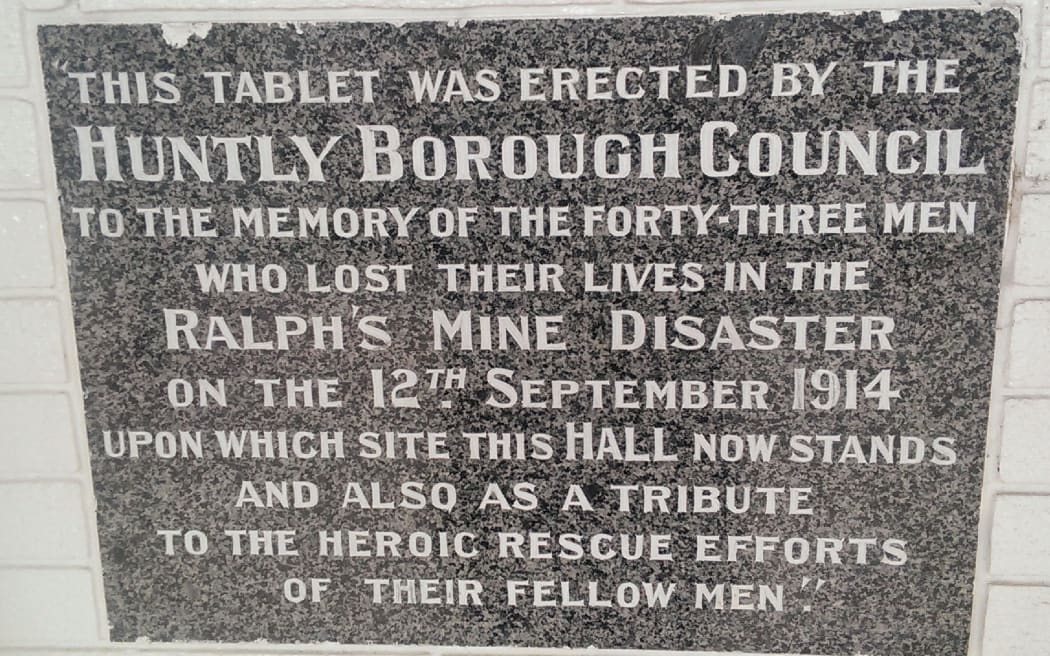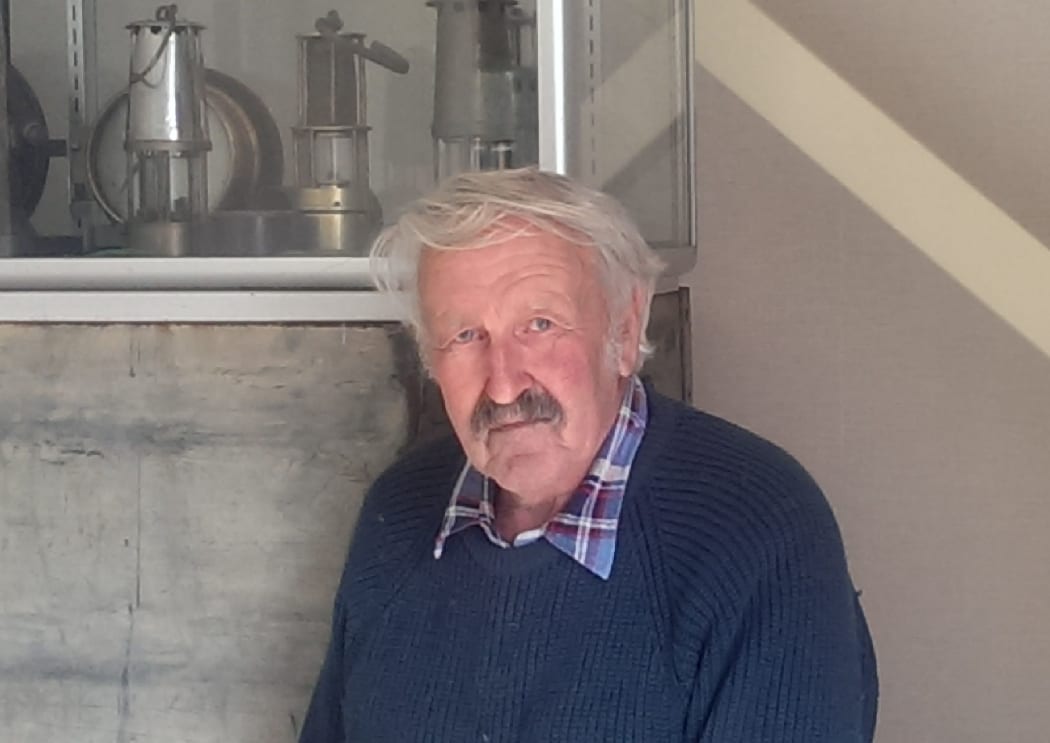Today marks 100 years since one of New Zealand's worst mining disasters - the Ralph Mine explosion which claimed the lives of 43 men working in the North Waikato mine.

A memorial to the 43 men killed in the 1914 Ralph Mine disaster. Photo: RNZ
About 7.20am on the morning of 12 September, 1914, the North Waikato town of Huntly was rocked by an explosion which sent a column of smoke, flames and dust into the air from the mine shaft, which was right in the centre of town.
Nineteen men survived, some of them badly injured.
The Ralph Mine disaster is second in severity only to the 1896 Brunner tragedy on the West Coast, when 65 miners were killed by choking gas.
The explosion beneath Huntly 18 years later was caused by an accumulation of firedamp, flammable, gasses igniting.
Joseph O'Brien, who was 28 at the time, was a survivor of the explosion. In 1947 he recounted his experience to the New Zealand Broadcasting Service's Mobile Recording Unit.
"I heard this tremendous noise, I turned around to look in the direction it came from and I was met with a blast of hot air and a huge storm of coal dust," he said.
" I did not then realise what was wrong but this cloud of coal dust immediately turned into flames, it happened in the twinkling of an eye."
Mr O'Brien was leaning on the timber uprights between two shafts at the time of the explosion.
"I was very lucky, had I not been standing there I would have been blown up the cage shaft like a rag doll."
Mr O'Brien said it was impossible to find words to describe the force and the pace of that explosion.
"During the explosion, brick walls were torn to pieces, rails were torn out of their slever beds and there was a constant stream of coal flying through the air."
The explosion occurred on a Saturday when only 62 men, aged from 17 to 64, were down the mine doing mainly maintenance work.
Had it happened on a week day, more than 250 men would have been working and the death toll would have been much higher.
The first rescue party was ready to descend within half an hour of the explosion but was forced back by dense smoke and overpowering fumes. Rescue work continued throughout the next day and by nightfall 26 bodies had been recovered. It was two weeks before the last body was found.

Former and mines rescue service member Stan Alder. Photo: Supplied
Stan Alder is a former miner and member ot the mines rescue service.
He said while a Royal Commission found that gases were ignited by the naked flame of a miners lamp, it may not have been the case.
"In the area it was believed to have occurred, it was an area known if you wanted to have a cigarette, and most people smoked in those days, that's where you would go. The miner that was in the area that preceded the examination of the area was a cigarette smoker."
Another former mine worker and local historian is Fred Rix. He has a slightly different take on what may have happened.
"Somebody broke the rules, it wasn't really the management's fault or anything, it was just that somebody went down there (the mine) and we think his light went out and when he lit his lamp, it exploded the place. You don't light a lamp underground, you light it on the surface and walk down."

Former miner and Huntly historian Fred Rix. Photo: RNZ
Mr Rix said as Huntly was a mining town, everyone was affected by the tragedy.
"The shock wave just shook the whole town ... windows broke, a huge dust cloud, it was pretty obvious what had happened. Getting down there (the mine) wasn't easy because you have the noxious gases and they didn't have the breathing equipment that we have today."
Mr Alder said while it was Huntly's darkest hour, work had to go on. World War I was in its early stages, the demand for coal was growing and it was an essential industry.
"The mining industry tends to pick themselves up pretty quick, life has to go on and like most tragedies there is a huge impact initially, they got over, the hurt remains there and for some families they have direct links to those who lost their lives."
The Ralph Mine closed in 1916, with most of the workers moving to other mines in the area,


